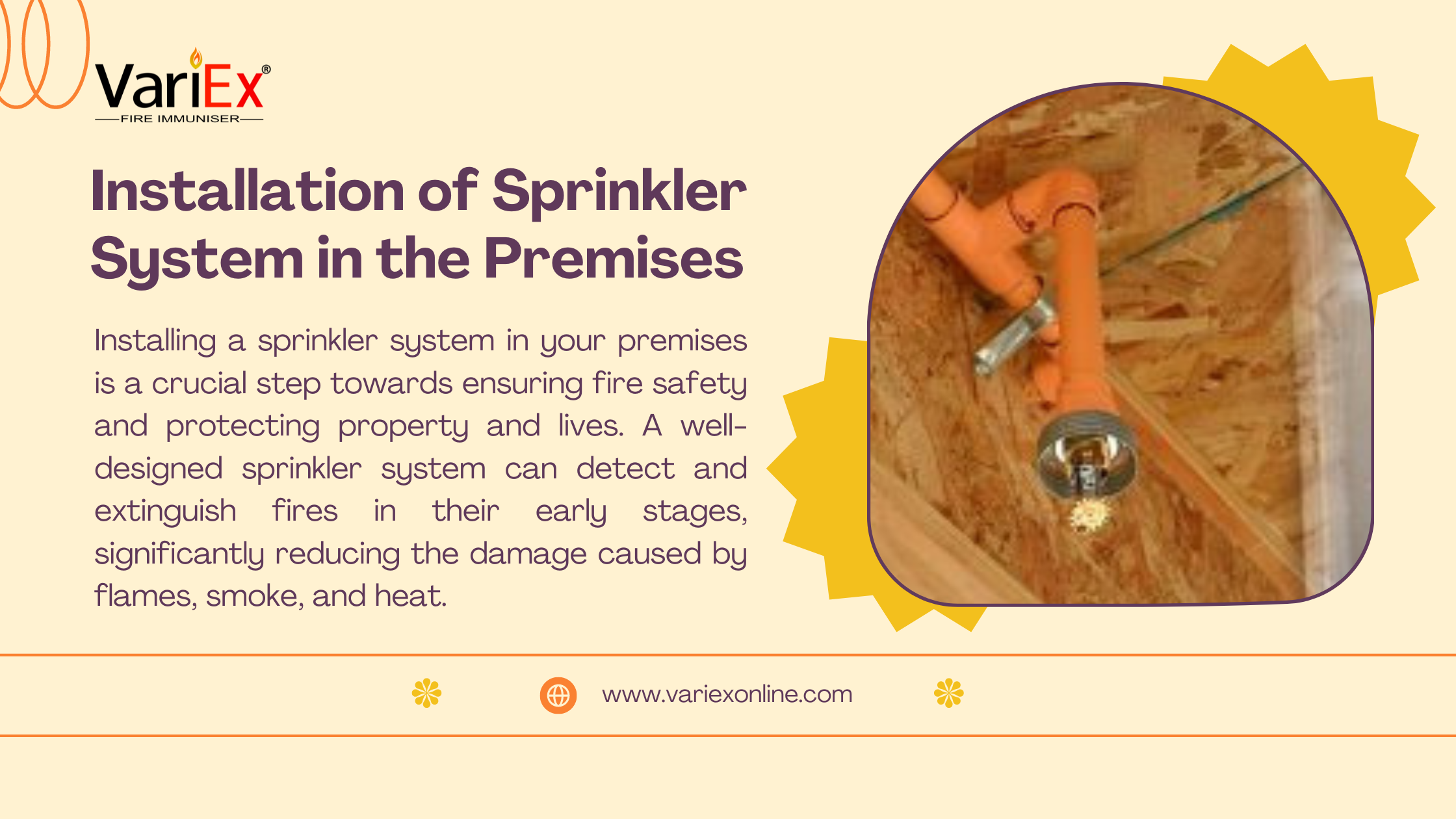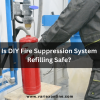![]()
Fire Immuniser
+91-7829629111
Email: info@variex.in
Varistor Technologies Pvt. Ltd.
Block-1, First Floor, Ardente Office One, Hoodi Circle, ITPL Main Road, Bengaluru, Karnataka 560048, IN
Installation of Sprinkler System in the Premises
Installing a sprinkler system in your premises is a crucial step towards ensuring fire safety and protecting property and lives. A well-designed sprinkler system can detect and extinguish fires in their early stages, significantly reducing the damage caused by flames, smoke, and heat.
Planning and Design
- Assessment: Begin with a thorough assessment of your premises, considering its layout, size, and specific fire risks. Identify areas that require coverage and evaluate water supply options.
- Design: Engage a qualified engineer or fire safety consultant to design the sprinkler system. They will consider factors such as building codes, occupancy types, and water pressure requirements to create an effective layout.
- Permits and Approvals: Obtain necessary permits and approvals from local authorities before proceeding with installation. Compliance with building codes and fire safety regulations is essential.
Installation Process
- Preparation: Clear the installation area of obstacles and ensure access to water supply lines. Coordinate with other trades if necessary to minimize disruptions.
- Piping Installation: Install the main supply pipes and branch lines according to the approved design. Use materials that comply with relevant standards for durability and fire resistance.
- Sprinkler Head Placement: Position sprinkler heads strategically to ensure even coverage. Different areas may require specific types of sprinkler heads based on fire risk and environmental conditions.
- Connection to Water Supply: Connect the sprinkler system to a reliable water source with adequate pressure and flow capacity. Consider installing a dedicated water tank or pump if needed.
- Control Panel Installation: Install a control panel that monitors the system and activates sprinklers in response to fire detection. Ensure the panel is accessible and clearly labeled for easy operation.
Testing and Commissioning
- Hydraulic Testing: Conduct hydraulic tests to verify the system's ability to deliver water to all sprinkler heads as per design specifications.
- Functional Testing: Test each sprinkler head individually to ensure proper activation and coverage. Verify the operation of alarms and control systems.
- Commissioning: Once testing is complete and any necessary adjustments are made, commission the system for full operation. Provide training to personnel on system operation and maintenance.
Maintenance and Compliance
- Routine Inspections: Establish a schedule for regular inspections and maintenance by qualified technicians. Inspections should include checking for leaks, corrosion, and ensuring proper functioning of all components.
- Record Keeping: Maintain detailed records of inspections, tests, and maintenance activities as required by regulatory authorities. This documentation demonstrates compliance and ensures the system's reliability.
- Upgrades and Modifications: Periodically review the system for upgrades or modifications to accommodate changes in occupancy, building layout, or technology advancements.
Conclusion
Installing a sprinkler system in your premises is a proactive measure that enhances fire safety and protects your investment. By following a systematic approach from planning through maintenance, you can ensure your sprinkler system remains effective and compliant with safety standards. Consult with professionals throughout the process to achieve optimal results tailored to your specific needs and environment.
Frequently Asked Questions
Installing a sprinkler system is crucial for fire safety. It can detect and suppress fires in their early stages, minimizing damage to property and saving lives.
Sprinkler systems are typically required in commercial buildings, industrial facilities, high-rise buildings, hotels, hospitals, and other structures where fire safety is paramount.
Sprinkler systems are triggered by heat. When a fire generates enough heat to activate a sprinkler head, it opens and releases water directly over the fire, helping to extinguish or control it until firefighters arrive.
Sprinkler systems are effective in controlling many types of fires, including those caused by flammable liquids, electrical faults, and ordinary combustibles. However, they may not be suitable for certain types of fires, such as those involving flammable metals or chemicals.
Sprinkler systems are designed based on the specific needs of the premises. Factors considered include building layout, occupancy type, fire hazards, water supply, and local fire codes. Designs are typically created by qualified engineers or fire safety consultants.
Final Say
At VariEx.in and VariexOnline.com, we specialize in supplying and installing top-quality fire fighting systems and equipment. From fire extinguishers to advanced suppression systems, we offer comprehensive solutions tailored to your needs. Our experienced team ensures precise installation and maintenance for optimal safety.
Trust VariEx for reliable fire protection. Contact us online or call 7829629111 to learn more.










